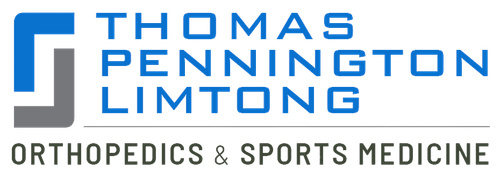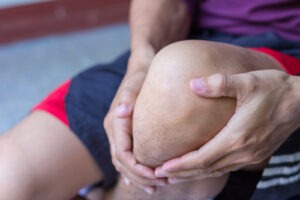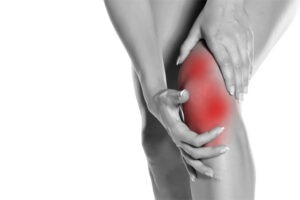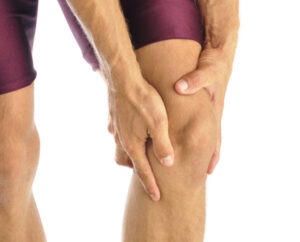 Shoulder pain can be a debilitating condition that affects daily activities and quality of life. Whether it’s caused by arthritis, bursitis, or other underlying issues, it’s important to seek proper treatment to alleviate discomfort and prevent further damage. While conservative measures such as physical therapy and medication may help, sometimes seeing an orthopedic surgeon is necessary for more advanced cases. In this blog post, we’ll discuss when it’s appropriate to seek the expertise of an orthopedic surgeon for your shoulder pain.
Shoulder pain can be a debilitating condition that affects daily activities and quality of life. Whether it’s caused by arthritis, bursitis, or other underlying issues, it’s important to seek proper treatment to alleviate discomfort and prevent further damage. While conservative measures such as physical therapy and medication may help, sometimes seeing an orthopedic surgeon is necessary for more advanced cases. In this blog post, we’ll discuss when it’s appropriate to seek the expertise of an orthopedic surgeon for your shoulder pain.
At the practice of Steven C. Thomas, MD, Justin B. Limtong, DO and Donald W Pennington, DO. Our board-certified surgeons specialize in treating shoulder injuries in the Las Vegas area.
Understanding the Causes of Shoulder Pain: Arthritis and Bursitis
Understanding the causes of shoulder pain is crucial for effective treatment and management. Two common causes of shoulder pain are arthritis and bursitis.
Arthritis occurs when the protective cartilage in the joints wears down, leading to pain, inflammation, and stiffness. There are several types of arthritis that can affect the shoulder, including osteoarthritis, rheumatoid arthritis, and post-traumatic arthritis. Osteoarthritis is the most common form and is often caused by wear and tear on the joint over time. Rheumatoid arthritis, on the other hand, is an autoimmune disorder where the immune system mistakenly attacks the joints, including those in the shoulder. Post-traumatic arthritis can occur following an injury or trauma to the shoulder joint.
Bursitis is another common cause of shoulder pain. Bursae are small fluid-filled sacs that cushion the bones, tendons, and muscles around joints. When these sacs become inflamed, usually due to repetitive motions or trauma, it can result in bursitis. Bursitis can cause swelling, tenderness, and limited range of motion in the shoulder.
Understanding the specific cause of your shoulder pain is essential in developing an effective treatment plan. By seeking medical attention and consulting with an orthopedic surgeon, you can receive a proper diagnosis and personalized treatment options to alleviate your shoulder pain and improve your quality of life.
Signs and Symptoms: When is it time to Seek Medical Attention?
Shoulder pain can range from mild discomfort to severe, debilitating pain. It’s important to pay attention to the signs and symptoms that may indicate when it’s time to seek medical attention for your shoulder pain. While some cases of shoulder pain can be managed with rest, ice, and over-the-counter pain medication, certain symptoms should not be ignored.
One common red flag is persistent or worsening pain that doesn’t improve with self-care measures. If you’ve tried rest, icing, and over-the-counter medication for a few days and your pain is still present or getting worse, it may be time to see a doctor. Other signs that should prompt medical attention include difficulty or inability to move your shoulder, swelling or bruising around the joint, and weakness or numbness in the arm or hand.
Additionally, if your shoulder pain is accompanied by a high fever, unexplained weight loss, or signs of infection such as redness or warmth around the joint, you should seek immediate medical attention. These symptoms may indicate a more serious underlying condition that requires urgent evaluation and treatment.
Remember, everyone’s pain tolerance and threshold for seeking medical attention may vary, but if you’re experiencing any of these symptoms or if your pain is interfering with your daily activities and quality of life, it’s always best to consult with a medical professional. They can help diagnose the cause of your shoulder pain and develop a treatment plan tailored to your specific needs.
By recognizing the signs and symptoms that warrant medical attention, you can take the necessary steps to alleviate your shoulder pain and improve your overall well-being.
The Role of an Orthopedic Surgeon in Diagnosing and Treating Shoulder Disorders
When it comes to diagnosing and treating shoulder disorders, orthopedic surgeons play a vital role. These specialized doctors have extensive training and expertise in the musculoskeletal system, specifically in the diagnosis and treatment of conditions affecting the bones, joints, ligaments, muscles, and tendons.
Orthopedic surgeons are equipped with the knowledge and tools to accurately diagnose the underlying cause of your shoulder pain. They will perform a thorough examination, review your medical history, and may order imaging tests such as X-rays or MRIs to get a clearer picture of what’s going on inside your shoulder. With their expertise, they can identify if your pain is due to arthritis, bursitis, or another shoulder disorder.
Once a diagnosis is made, orthopedic surgeons can develop a personalized treatment plan tailored to your specific needs. This may include a combination of non-surgical treatments such as physical therapy, medication, and lifestyle modifications. However, in more advanced cases where conservative measures have been exhausted, they may recommend surgical interventions such as shoulder arthroscopy or joint replacement.
Orthopedic surgeons also play a critical role in guiding you through the recovery process after surgery. They will provide post-operative care instructions, monitor your progress, and prescribe physical therapy to help you regain strength, mobility, and function in your shoulder.
Overall, orthopedic surgeons are essential in diagnosing, treating, and managing shoulder disorders. Their expertise and specialized training ensure that you receive the most appropriate and effective care for your shoulder pain, allowing you to regain control of your life and improve your overall well-being.
Potential Treatment Options for Arthritis and Bursitis in the Shoulder
When it comes to treating arthritis and bursitis in the shoulder, there are a variety of options available to help alleviate pain and improve function. The specific treatment approach will depend on the severity of the condition, the underlying cause, and individual factors such as age and overall health.
In many cases, conservative measures will be the first line of treatment. This may include rest, ice, physical therapy exercises, and over-the-counter pain medications. Physical therapy can be especially beneficial for improving range of motion, strengthening the muscles around the shoulder joint, and reducing inflammation. In some cases, corticosteroid injections may also be used to provide temporary relief from pain and inflammation.
For more advanced cases or when conservative measures have been unsuccessful, surgical intervention may be recommended. In the case of arthritis, shoulder arthroscopy or joint replacement surgery may be performed to repair damaged cartilage or replace the entire joint. Bursitis, on the other hand, may require a bursectomy, which involves removing the inflamed bursa.
It’s important to note that the best treatment approach will be determined by your orthopedic surgeon based on your specific condition and needs. They will consider factors such as the severity of your symptoms, your level of activity, and any other underlying medical conditions you may have.
Overall, the goal of treatment is to reduce pain, improve function, and enhance your overall quality of life. By working closely with your orthopedic surgeon, you can develop a personalized treatment plan that addresses your specific needs and helps you get back to doing the activities you love.
Importance of Early Detection and Treatment
Early detection and treatment of shoulder pain is crucial for a number of reasons. First and foremost, addressing the issue early on can prevent further damage and complications. Shoulder pain, if left untreated, can worsen over time and lead to more severe conditions that may require more invasive interventions. By seeking medical attention at the first signs of shoulder pain, you can increase the likelihood of successful treatment and minimize the risk of long-term complications.
Additionally, early treatment can help alleviate discomfort and improve your quality of life. Shoulder pain can be debilitating, impacting your ability to perform daily activities, work, and enjoy recreational pursuits. By addressing the problem early on, you can reduce pain, restore function, and regain control over your life.
Furthermore, early detection and treatment can lead to more conservative and less invasive treatment options. In many cases, early-stage shoulder conditions can be effectively managed with non-surgical interventions such as physical therapy, medication, and lifestyle modifications. These options are typically less burdensome and carry fewer risks than surgical interventions. By seeking treatment early, you may be able to avoid or delay the need for surgery.
In summary, early detection and treatment of shoulder pain is crucial for preventing further damage, reducing pain, and improving your quality of life. If you’re experiencing shoulder pain, don’t delay seeking medical attention. By taking action early on, you can increase the chances of successful treatment and minimize the impact of shoulder pain on your daily activities and overall well-being.
Contact Surgeons Dr. Thomas, Dr. Pennington, and Dr. Limtong at the Knee and Shoulder Institute in Las Vegas, NV to Schedule an Appointment:
If you would like to schedule an appointment or learn more about the Knee and Shoulder Institute procedures & treatments,contact the office today click here.
Serving patients from and around greater Las Vegas, Lake Havasu, Bullhead City, Mesquite, Pahrump, Nevada

 If you’re one of the millions of people who suffer from chronic knee pain, you may have considered a total knee replacement as a way to improve your mobility and quality of life. This common orthopedic surgery is a major decision, but for many, it can be life-changing. However, the road to recovery after a total knee replacement can be challenging. That’s why it’s important to have the right information and support to help you through the process. In this blog post, we’ll explore what to expect during recovery and share tips for a successful rehabilitation journey, straight from an experienced orthopedic surgeon.
If you’re one of the millions of people who suffer from chronic knee pain, you may have considered a total knee replacement as a way to improve your mobility and quality of life. This common orthopedic surgery is a major decision, but for many, it can be life-changing. However, the road to recovery after a total knee replacement can be challenging. That’s why it’s important to have the right information and support to help you through the process. In this blog post, we’ll explore what to expect during recovery and share tips for a successful rehabilitation journey, straight from an experienced orthopedic surgeon.  If you’re dealing with a
If you’re dealing with a  If you’ve recently experienced an ACL tear, then you know how debilitating and painful it can be. While there are many orthopedic surgeons that can help with the repair, it is essential to seek out an experienced knee specialist who specializes in ACL tears. A knee specialist will have the knowledge, skills, and expertise to properly diagnose and treat your ACL tear, helping you to return to optimal functioning as quickly and safely as possible. At the practice of Steven C. Thomas, M.D., Donald W. Pennington, D.O, and Justin B. Limtong, D.O.,
If you’ve recently experienced an ACL tear, then you know how debilitating and painful it can be. While there are many orthopedic surgeons that can help with the repair, it is essential to seek out an experienced knee specialist who specializes in ACL tears. A knee specialist will have the knowledge, skills, and expertise to properly diagnose and treat your ACL tear, helping you to return to optimal functioning as quickly and safely as possible. At the practice of Steven C. Thomas, M.D., Donald W. Pennington, D.O, and Justin B. Limtong, D.O.,  Are you living with Arthritis of the
Are you living with Arthritis of the  When it comes to
When it comes to 
 Returning to work after
Returning to work after